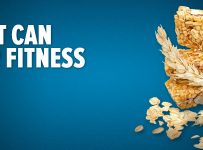
by Kyle Arsenault T-Nation
Here’s what you need to know…
• By activating the core with specific exercises, you not only develop the ability to transfer more force and push more weight, you’ll effectively “shrink wrap” your spine and end up with a thinner waist.
• Doing a plank variation before a bilateral squat or an overhead anti-extension before a deadlift helps engage the core so you can really crush some weight.
• To challenge core stability, add slabs of rock hard muscle, and enhance work capacity, finish a session off with some energy system work that includes weighted carries, battle rope variations, sled pushes, or bear crawls.
Maybe you’ve been told you shouldn’t train abs or other core musculature before your main lifts because it will fatigue your system and you won’t be able to demonstrate your true strength. Or maybe you’ve heard the opposite, that you should train core before your main lifts to activate the system and encourage more stability.
Or maybe you’ve heard both, but still don’t give a damn about core training and just hit the gym with no plan or goal. If this sounds like you, good luck in achieving a body defined by Herculean strength and a godlike physique. For the rest of us, the conflicting information about where core training should fall within a training session can be confusing. It’s time to figure it out.
Below are three different times where core training can and should be incorporated into your program to help you maximize strength, avoid injury, and walk around looking like part of the 300 cast.
Where Core Training Should Be In Your Program
1. As Activation (pre dynamic warm up)
In order to effectively stabilize the trunk, the core musculature has to work in unison with appropriate timing. By activating the core in an efficient pattern with exercises such as supine leg lifts, quadruped reaches (birddogs), and back-to-wall overhead reaches, you’re encouraging the core to fire/work in an efficient and proper manner. The goal with each of these exercises is to keep the lower back from moving (no arch or rotation) and the ribcage from flaring from a neutral position as the arms and/or legs move.
Controlling the core in this manner will allow you to transfer more force, push more weight, and avoid injury. Also, by effectively “shrink wrapping” your spine and not merely clamping down with your rectus abdominus, you’ll end up with a thinner waist… a nice and easy way to achieve the X shape we all want.
2. As Your 1A Exercises
In my programming I use my 1A exercises – or 2A, 3A, etc. – to get my athletes ready for their 1B exercises, and this usually includes a core component. I don’t want these exercises to fatigue the athlete’s core to a point that it’ll negatively affect the subsequent exercise, but instead I want the core to “activate” in a more specific pattern. For example, if I want my athlete to crush a reverse lunge as their 1B exercise, I’ll likely have them complete a 1A exercise from a static lunge (split stance) or half kneeling position where they’re focusing on perfect form while trying to prevent motion at the trunk.
A split stance medicine ball chop works well to engage the core and pattern the lunge before trying to crush some weight on a reverse lunge, for example. Other examples would include a plank variation before a bilateral squat or an overhead anti-extension (such as an overhead medicine ball tap, overhead RIP Trainer reach, etc.) before a deadlift.
3. Post Training or Energy System Work
Once the bulk of your program is complete, you can, and in many cases should, challenge your core stability in a fatigued state. When fatigue enters the equation, core stability is compromised and that promotes faulty movement, loss of strength and power, diminishing performance, and higher potential for injury.
Adding higher-level core stability exercises at the end of your training session can help to challenge and strengthen the core when it’s most likely to fail (just make sure you’re keeping perfect form). Try adding higher-level plank variations such as fallouts, slideboard body saws, or weighted plank rows (renegade rows) at the end of your session. For more of a rotational challenge, try incorporating higher level anti-rotation presses such as the anti-rotation walkout, TRX anti-rotation presses, or split stance lifts or chops.
One of the best ways to challenge core stability, add slabs of rock hard muscle, and enhance work capacity is to finish a session off with some energy system work that includes weighted carries (especially unilateral carries), battle rope variations, sled pushes, or bear crawl variations. The focus is to complete as much work as possible while maintaining a stable trunk. Try putting together a finishing circuit in a density fashion with one or more of these exercises. For example, complete heavy farmer’s walks or sled pushes for a pre-determined distance for a pre-determined amount of time.
The goal would be to complete as many trips as possible in the specified amount of time. Not only will your core be fried, but your entire system will be on fire and your body will be forced to adapt by building more lean muscle.
Activate, Understand, Get Better
The goal of core training, no matter where it falls in your session, is to challenge the core to stabilize the trunk, reduce excess motion at the trunk, and transmit force effectively. I encourage you to first activate and understand what it feels like to maintain a stable trunk, then strengthen the core in specific patterns to promote better performance of a subsequent exercise, and lastly challenge your core stability and strength when you’re fatigued.
Source: http://www.t-nation.com/training/how…ock-hard-waist







